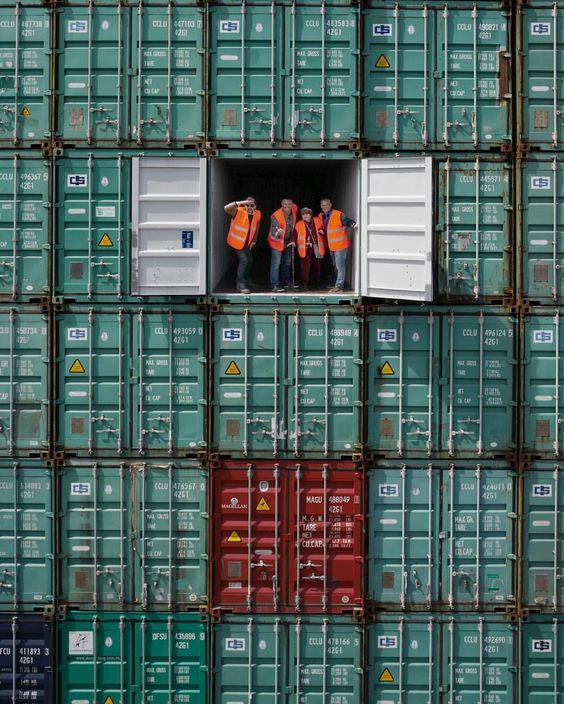
Shipping containers, are commonly used for everything from storage units to homes and offices. Painting them not only gives a fresh look but also protects the container from the elements. Whether you’re using a container for a backyard project, a mobile office, or even as an art installation, painting is an important step to keep it in good condition and visually appealing.
This guide will walk you through the essential steps of preparing your container for painting and how to choose the best paint to get the job done right.
Why Painting a Shipping Container is Important
Painting a container offers two key benefits: protection and aesthetics. The metal surface of a container is exposed to various weather conditions, such as rain, sun, and wind, which can lead to rust and other damage over time. A proper coat of paint acts as a barrier, helping to prevent moisture from reaching the steel and reducing the risk of rust.
In cities like Jacksonville, Miami, and Tampa, where humidity and heat can take a toll on metal structures, painting your container is an effective way to maintain its condition. Besides the practical benefits, painting also transforms the appearance of the container, allowing you to blend it into your surroundings or turn it into a striking design feature.
Steps to Prepare a Shipping Container for Painting
Before applying any paint, it’s crucial to properly prepare the surface of the container. This ensures that the paint adheres well and provides lasting protection. Here’s how to get started:
1. Clean the Surface
Sea containers often come with grime, salt, or other residues from their previous use. To ensure the paint sticks well, the surface must be clean and free of debris.
- Pressure Wash: Using a pressure washer is an effective way to remove dirt and grime from the container. Make sure to clean every surface, including corners and edges where dirt tends to accumulate.
- Use a Mild Detergent if Necessary: If the container has tough stains or grease, applying a mild detergent during the wash can help break down these areas. Once the container is clean, let it dry completely.
2. Remove Rust and Old Paint
After cleaning, it’s important to remove any existing rust or peeling paint. Rust can weaken the container over time, and loose paint can interfere with the adhesion of the new coat.
- Scraping and Sanding: Use a wire brush or scraper to get rid of any loose paint and surface rust. Follow up by sanding the area to smooth down rough patches and ensure a consistent surface for the paint.
- Rust Converter: If there are sections where rust remains, applying a rust converter can help. This product chemically stabilizes rust and prevents it from spreading, allowing you to paint over it.
3. Apply Primer
Priming the container is a crucial step that should not be overlooked. Primer creates a smooth, even surface for the paint to adhere to and provides additional protection against rust and moisture.
- Choose the Right Primer: A metal-specific primer is essential for shipping containers. In areas with humid climates, such as parts of Florida, using an anti-corrosion primer is especially important.
- Apply Evenly: Use a roller or sprayer to apply the primer evenly across the container’s surface. Make sure to cover all areas, especially around seams and edges where rust is more likely to form.
Choosing the Right Paint for Your Shipping Container
After properly preparing the container, the next step is selecting the right paint. Choosing the right paint not only improves the appearance of your container but also helps protect it from weather-related damage.
1. Consider the Environment
The local climate plays a big role in determining the type of paint you need. In hot and humid environments, like those found in cities such as Jacksonville, Miami, and Tampa, it’s important to choose paints that can handle moisture and UV exposure.
- UV-Resistant Paint: Containers in areas with strong sunlight should be painted with UV-resistant paint to prevent fading and maintain the color over time.
- Moisture and Rust Protection: For humid or rainy climates, anti-corrosive paints designed for metal surfaces are recommended. These paints help prevent rust and prolong the life of the container.
2. Types of Paint
The two most common types of paint for shipping containers are acrylic and epoxy paints. Both have their advantages, depending on the environment and the desired finish.
- Acrylic Paint: Acrylic paint is water-based and easy to apply. It dries quickly, making it a good option if you’re looking for a fast, straightforward project. It works well in moderate conditions and offers a smooth, attractive finish.
- Epoxy Paint: Epoxy paint is more resistant to wear and tear. It forms a thick, protective layer that shields the container from moisture, chemicals, and physical damage. Epoxy is ideal for containers that will be exposed to harsh environments or for long-term use.
3. Color Choices
While functionality is the most important factor, the color of your container paint also plays a key role in the overall look of your project.
- Neutral Colors: Neutral tones like gray, beige, and green are popular choices for containers meant to blend into the environment. They are also practical, as they tend to hide dirt and grime better than lighter colors.
- Bold Colors: For a more modern or artistic look, bold colors like red, blue, or even bright yellow can make a statement. These colors are often used for shipping containers that serve as creative spaces, offices, or pop-up shops.
Applying the Paint


Once you’ve chosen the right paint, it’s time to apply it to the container. Follow these steps to ensure a smooth and even finish:
- Use a Paint Sprayer for Best Results: While rollers and brushes work, using a paint sprayer provides the best coverage and helps you apply the paint evenly, especially on the large, flat surfaces of a container.
- Apply Multiple Coats: For the best results, apply two or more coats of paint. Allow each coat to dry fully before applying the next one. This ensures even coverage and maximum protection.
- Inspect and Touch Up: After the paint has dried, check the container for any areas that might need touch-ups. Be sure to give extra attention to corners and seams, which are often harder to cover thoroughly.
Painting a shipping container is an important step in transforming it into a functional, long-lasting space. Proper preparation and the right choice of paint ensure that your container will remain protected from the elements while looking fresh and new. Whether you’re repurposing the container for a home, storage, or a creative project, following these steps will give you a quality finish that stands the test of time.
For those preparing to paint sea containers in Jacksonville or cities like Miami and Tampa, the climate considerations make selecting the right materials even more critical. Ensure your container is properly prepared and choose the best paint to keep it looking great for years to come.
- 0shares
- Facebook0
- Pinterest0
- Twitter0



